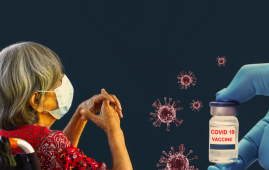Symptom timelines surrounding COVID-19 infections tend to center on either the immediate 5-day quarantine guidelines or the long-COVID symptoms that can last a month or potentially far longer. But some patients report a medium COVID-19 that goes away before it becomes long COVID but lasts longer than is typical for viral infections.
People may return to work or daily routines, but something is off: What had been simple exercise regimens become onerous. Everyday tasks take more effort.
Does this ill-defined subset point to a “medium COVID?”
Farha Ikramuddin, MD, a physiatrist and rehabilitation specialist at the University of Minnesota points out there is no definition or shared official understanding of a middle category for COVID.
“But am I seeing that? Absolutely,” she says.
Feldman described a dinner with a friend after quarantining.: “One glass of wine left me feeling like I’d had a whole bottle,” she said. “I was bone-achingly exhausted but couldn’t sleep.”
Medical Mystery
Ikramuddin notes that what causes extended COVID-19 symptoms is still a medical mystery.
“In one scenario,” she says, “the question is being asked about whether the virus is staying dormant – similar to herpes zoster or HIV.”
“Right now, instead of getting more answers, we’re getting more questions,” Ikramuddin says.
Mouhib Naddour, MD, a lung specialist with Sharp HealthCare in San Diego, says he’s sees some patients who have had COVID take longer to recover than is typical for other viral infections.
Some patients fall between those recovering within 2-3 weeks and patients having long COVID. Those patients in the gap could be lumped into a middle-range COVID, he says.
“We try to put things into tables and boxes but it is hard with this disease, “ Naddour says. He agrees there’s no medical definition for “medium” COVID, but he says the idea should bring hope for patients to know that if their symptoms are persisting they don’t necessarily have long COVID and their symptoms may still disappear.
It’s a Range, not a Category
Fernando Carnavali, MD, coordinator for Mount Sinai’s Center for Post-COVID Care in New York City, says he is not ready to recognize a separate category for a “medium” COVID-19.











Leave a Comment